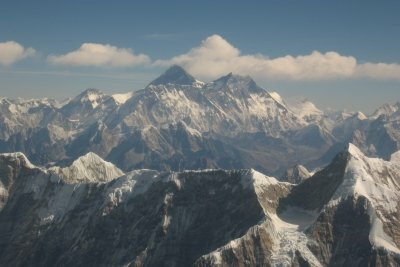Calculate the location factor on Mount Everest
Are you supposed to calculate the location factor on Mount Everest in physics class? Or do you just want to have a comprehensible example for calculating the location factor? Then you will find all the necessary information on how to do this in these instructions.

What is Mount Everest
- Mount Everest is the highest mountain on earth.
- Its height is 8848 meters above sea level.
- It is part of the Mahalangur Himal mountain range in the Himalayas and lies on the border between Nepal and China in the north.
- The commonly used name Mount Everest comes from the British geodesist George Everest, who lived in the mid-19th century. Century the first to measure the location and the first peaks. His successor introduced the term Mount Everest in honor of him in 1865.
- In the national language of Nepal the mountain is called Sagarmatha and in Tibetan Qomolangma.
The gravitational pull of Mars and Earth in comparison
The gravitational pull on Mars is about 1/3 of the corresponding force on the ...
What is the location factor?
- The spatial factor describes the proportionality of the mass of a body to its weight.
- Depending on the mass of the object on which this body is located and the distance between the two, the spatial factor is always different.
- D. In other words, at every place that differs in this point, the body has the same mass, but a different weight.
- The unit is m / s2, equivalent to N / m.
- It can be seen that this is an acceleration, i.e. the body would increase in speed in a smooth fall. D. that is, it experiences gravitational acceleration.
- The acceleration due to gravity is in Germany mostly simplified with 9.81 m / s2 indicated, but is higher in places that are closer to the center of the earth (north and south poles) and lower in places that are further away (equator, mountains).
How do you calculate the location factor on Mount Everest?
- The required formula is g = (m * G) / (r)2.
- Here g is the gravitational field strength, i.e. the spatial factor, m the mass of the earth, G the gravitational constant and r the radius of the earth at a given point.
- The following variables are to be considered: The location factor used in Germany with g = 9.81 m / s2, the mass m of the earth with 5.97 * 1024 kg, the gravitational constant G with 6.67 * 10-11 Nm2/kg2 and the height hME of Mount Everest with 8848 m.
- From these values you can approximate the radius of the earth by inserting and rearranging Dimensions determine in Germany: g = (m * G) / (r)2 -> r = root ((m * g) / g); r = root ((5.97 * 1024 kg * 6.67 * 10-11 Nm2/kg2) / 9.81 N / kg); r = 6371117 m.
- Add the height of Mount Everest to the determined radius and get the radius rME: rME = r + hME; rME = 6371117 m + 8848 m; rME = 6379965 m.
- Now all you have to do is take the original formula and for r rME insert: gME = (m * G) / (rME)2; GME = (5,97 * 1024 kg * 6.67 * 10-11 Nm2/kg2) / (6379965 m)2; GME = 9.78 m / s2.
- The calculated location factor for Mount Everest is 9.78 m / s2.
The calculated value is therefore closer to the value of 9.76 m / s determined by the EGM20082. Please also note that rounded values are used for regular calculations and that there is therefore always a certain deviation.
How helpful do you find this article?
